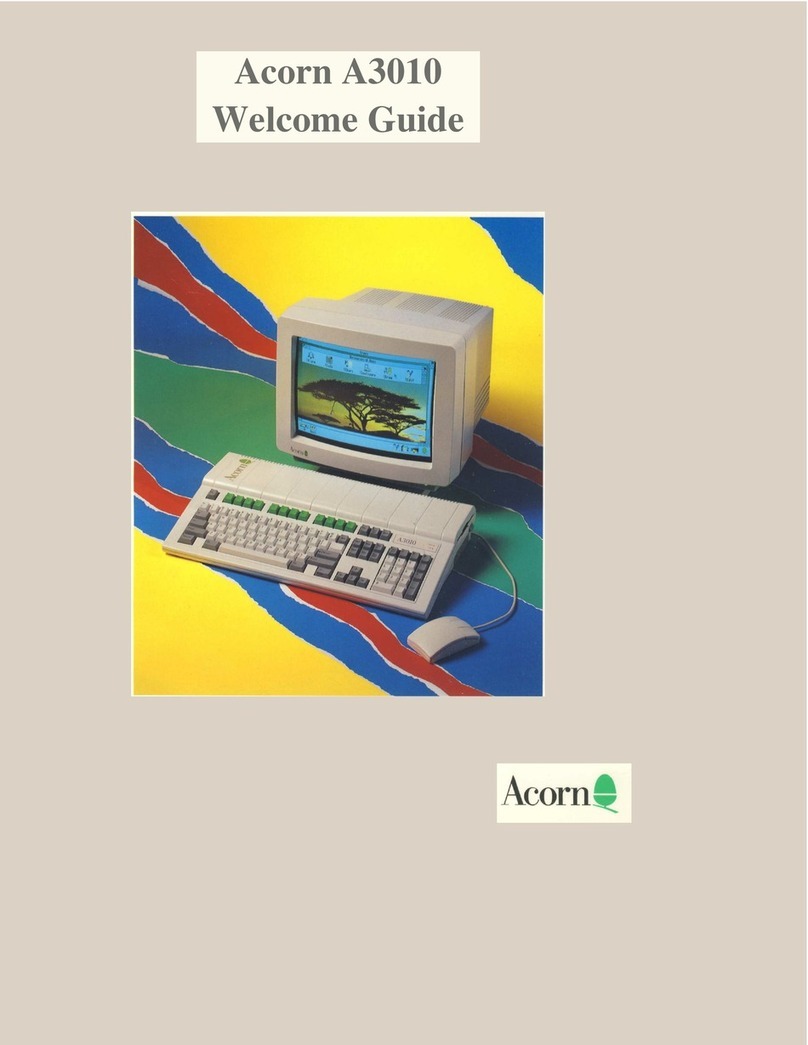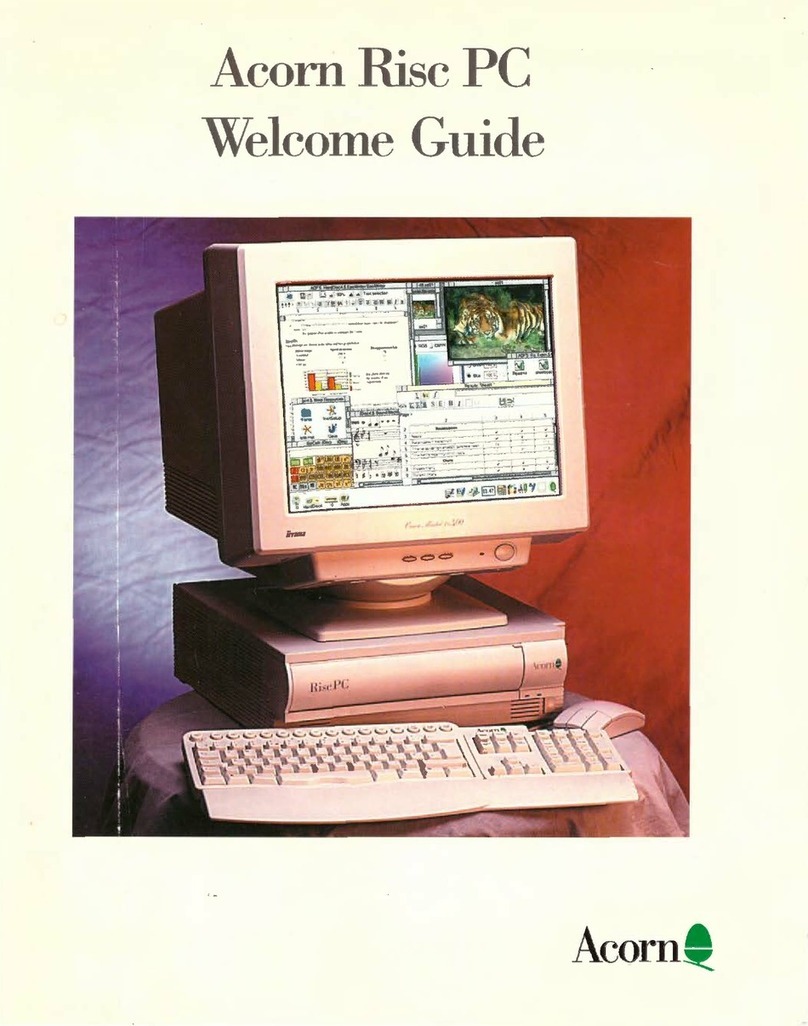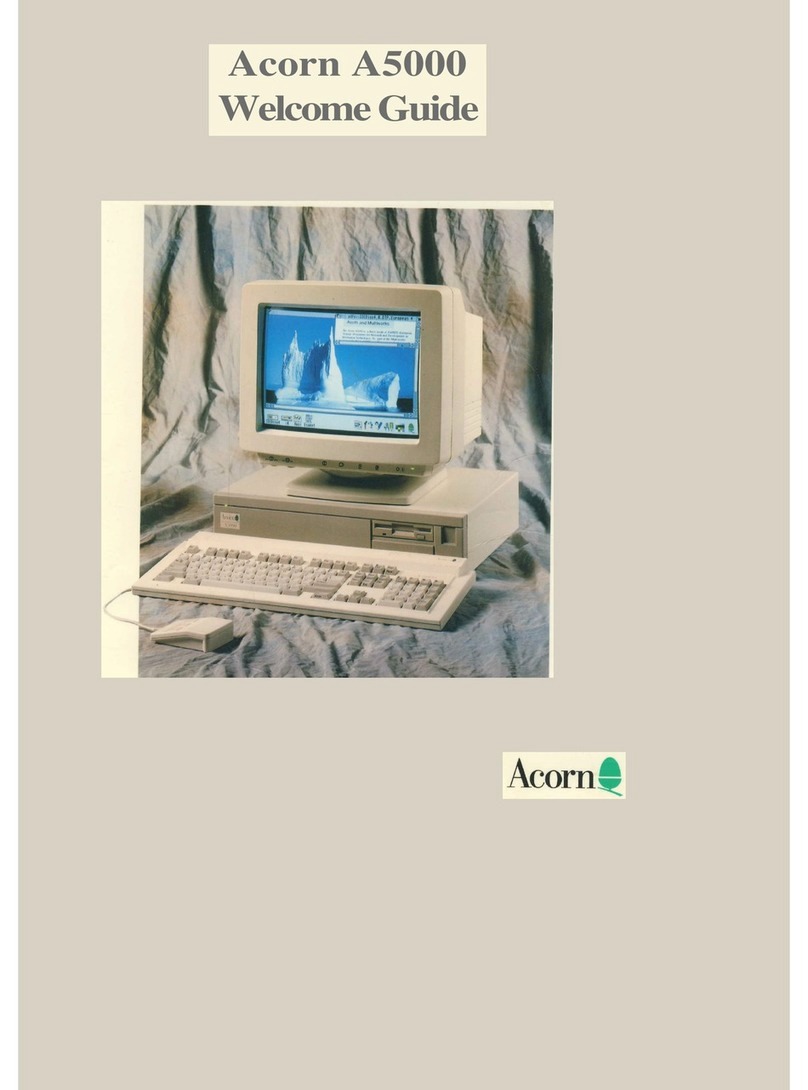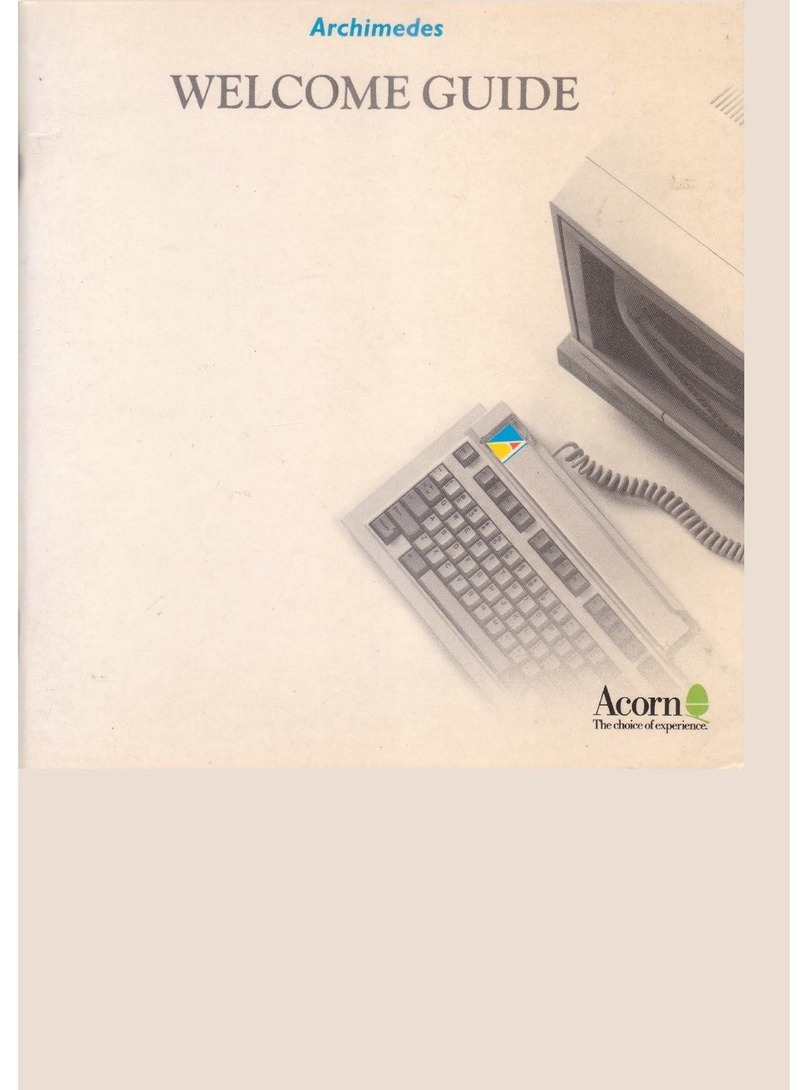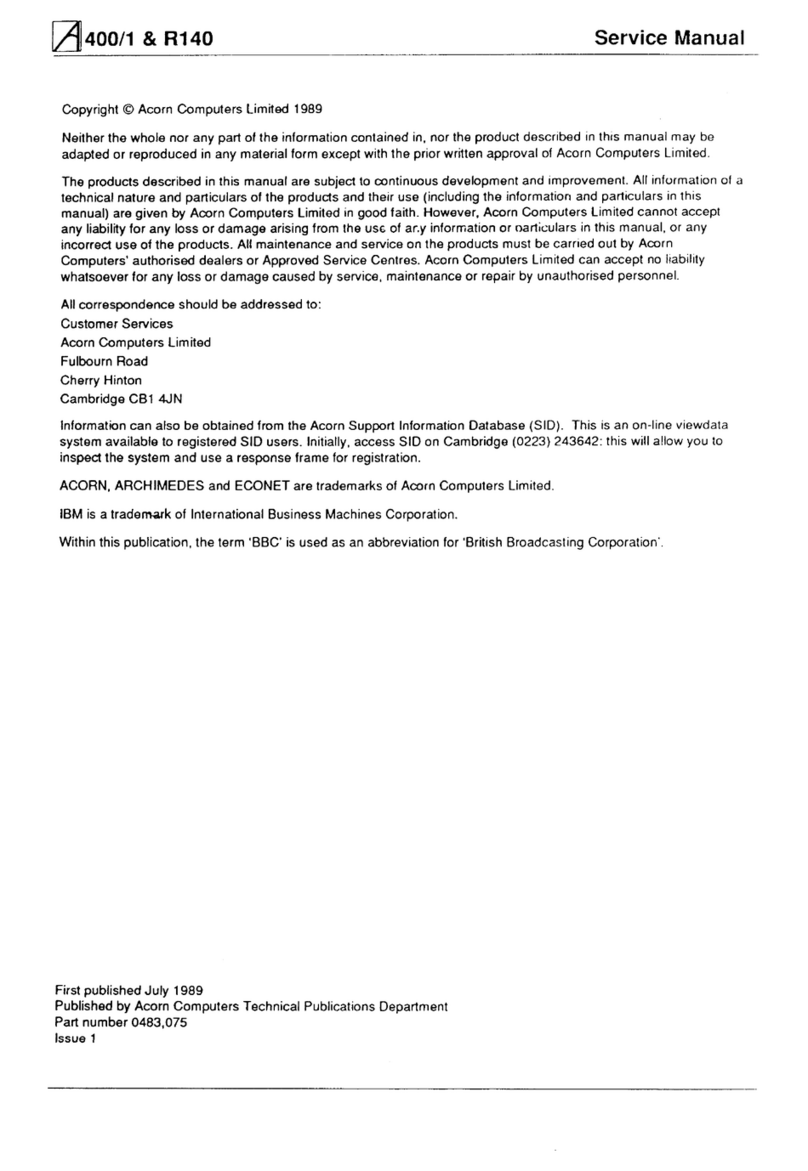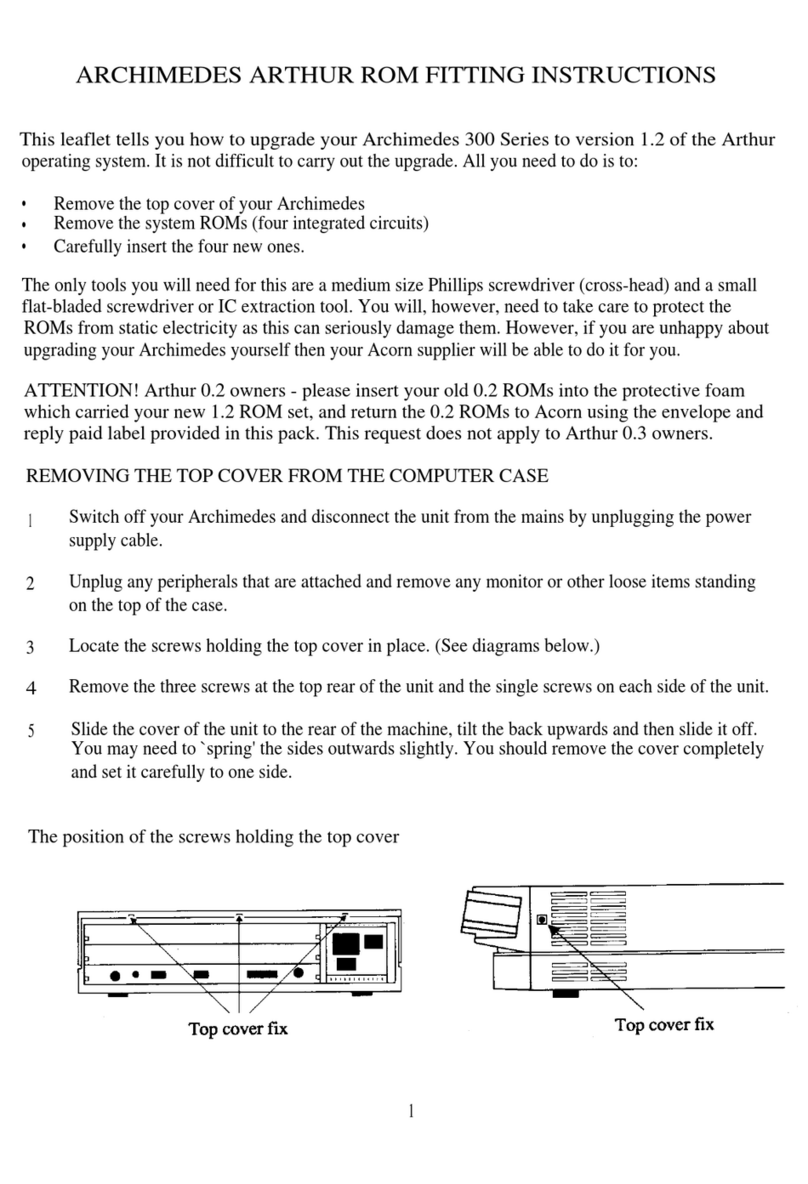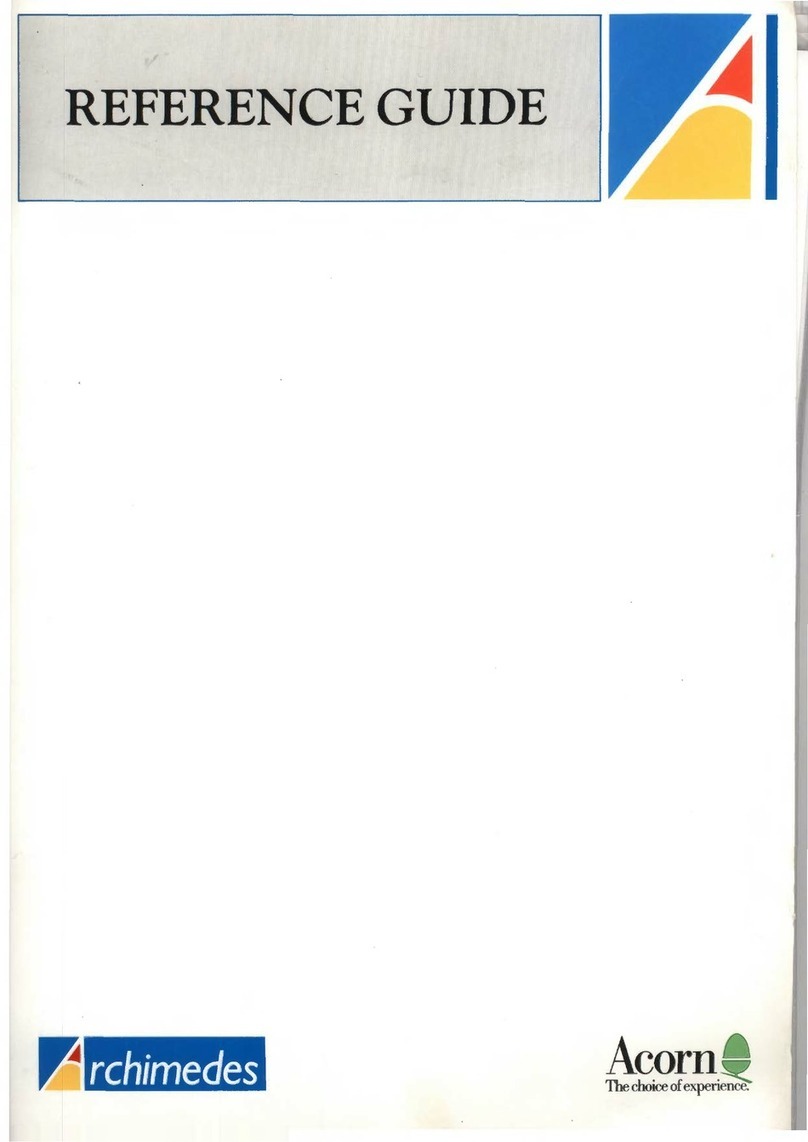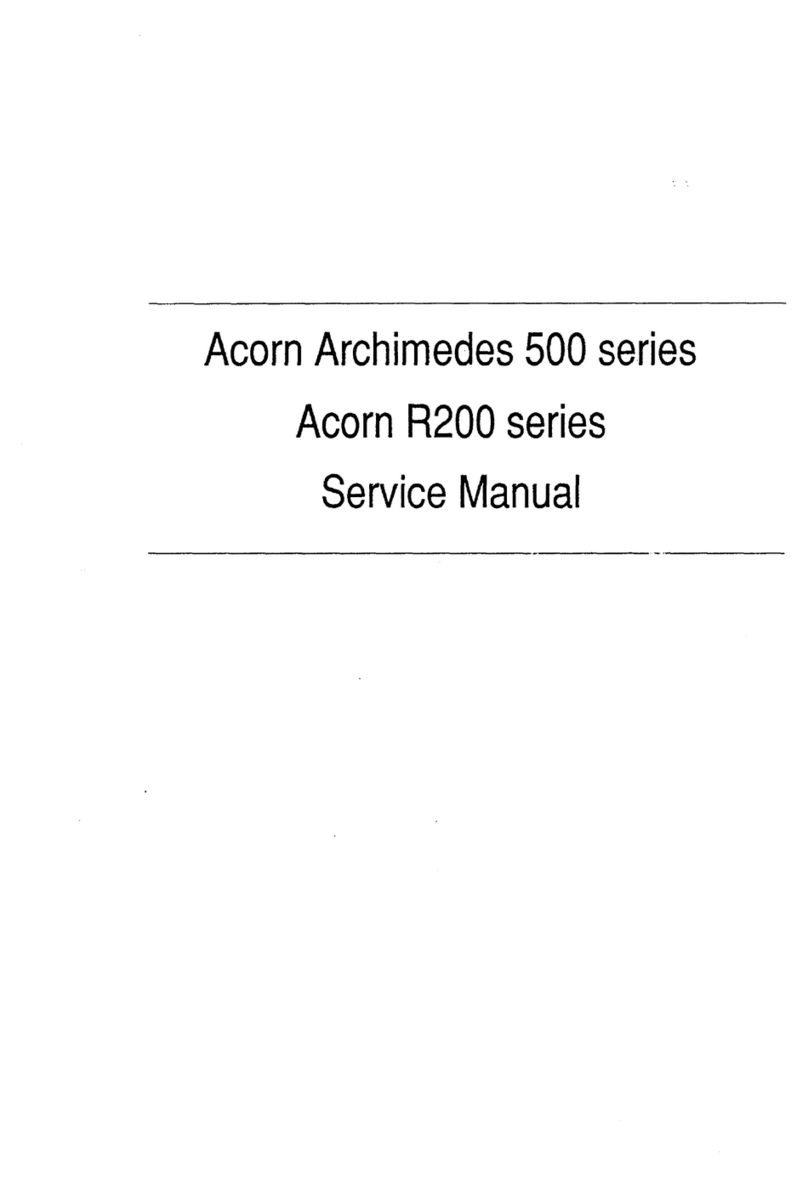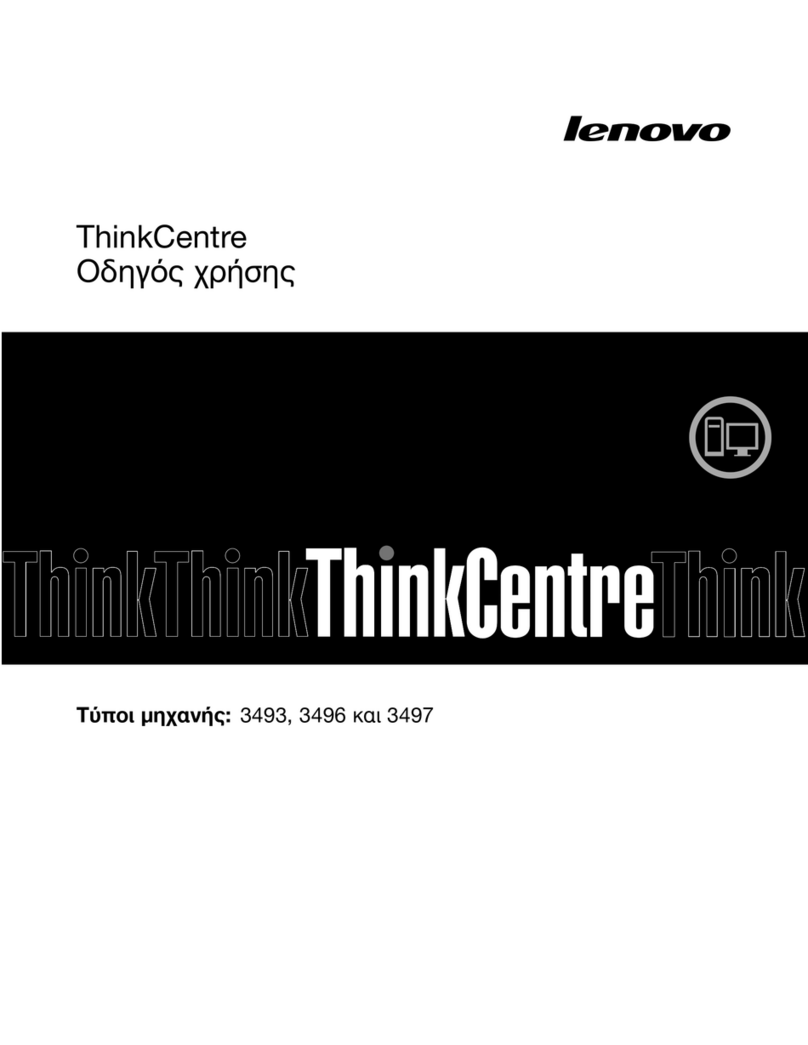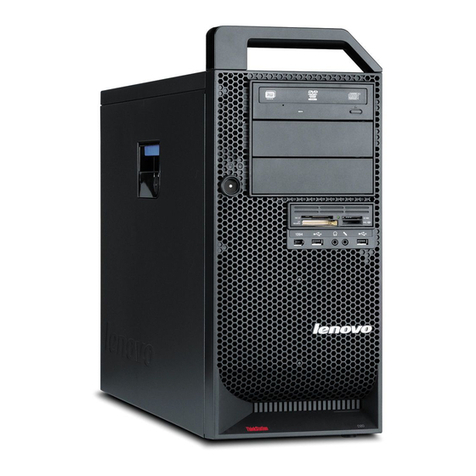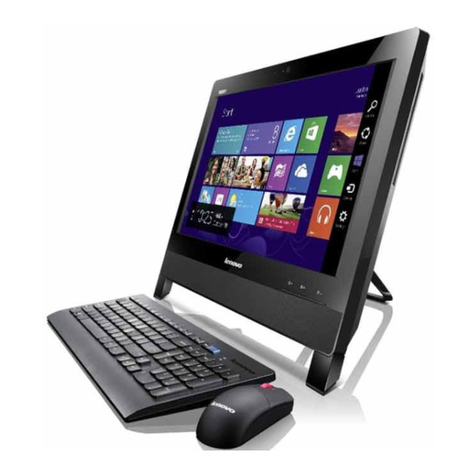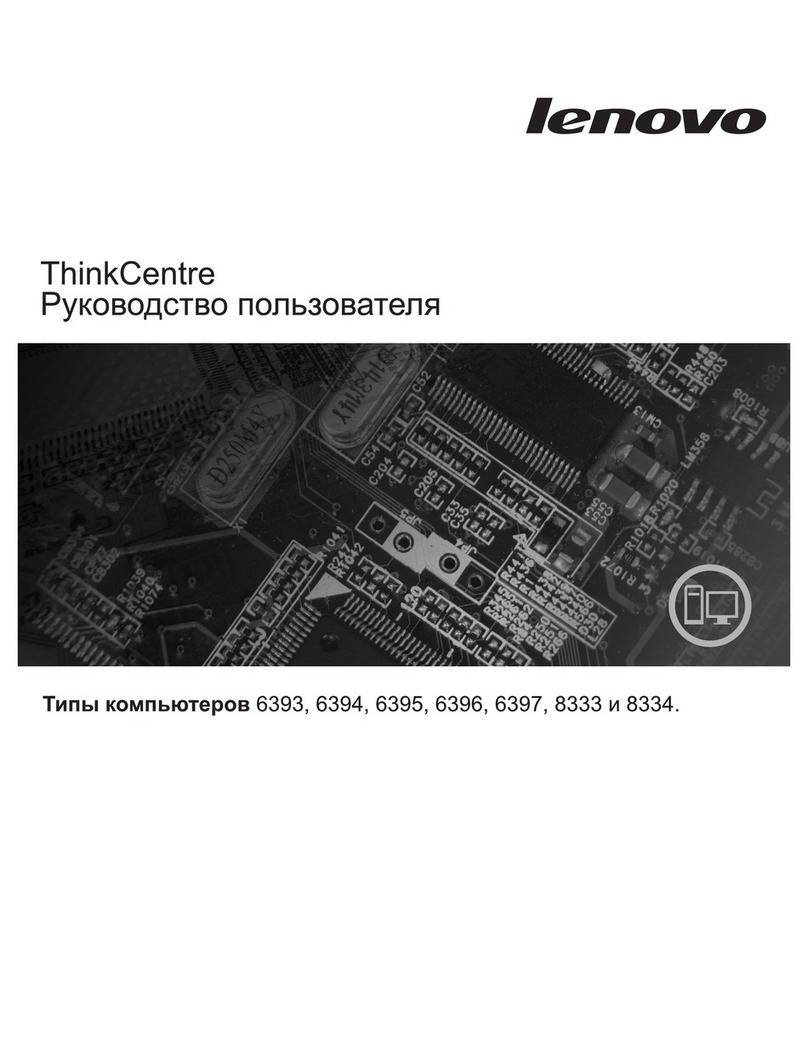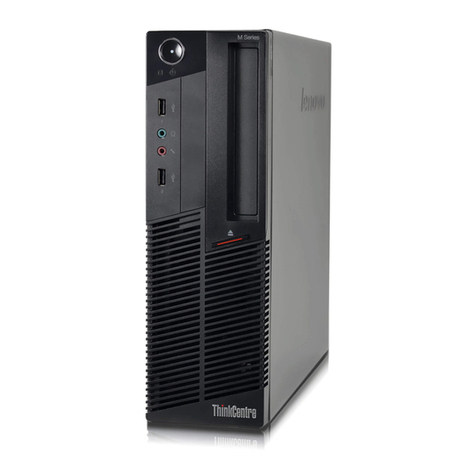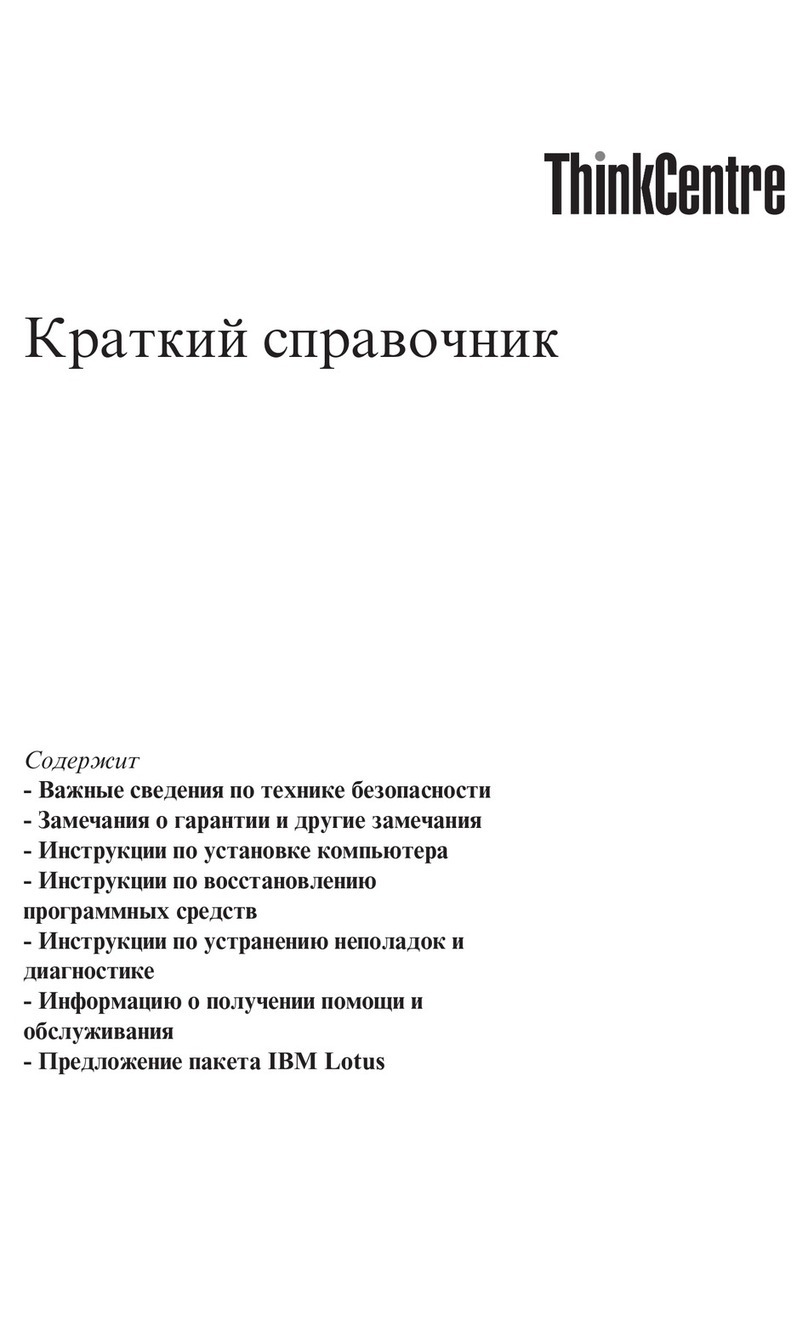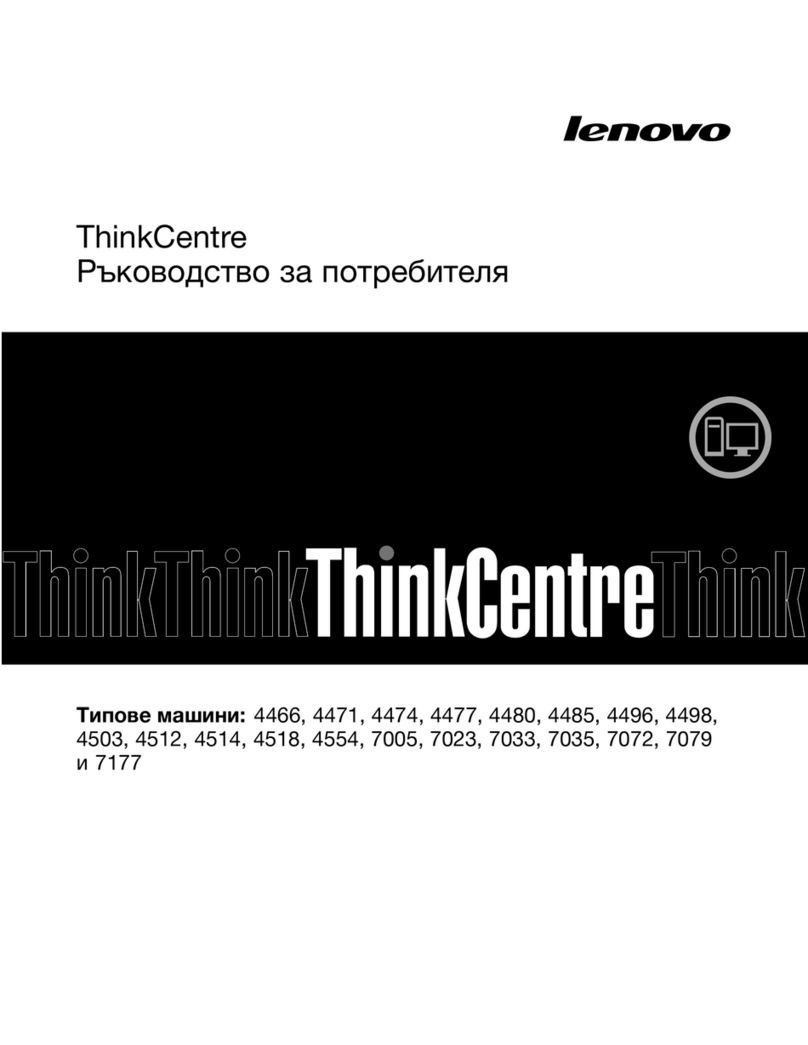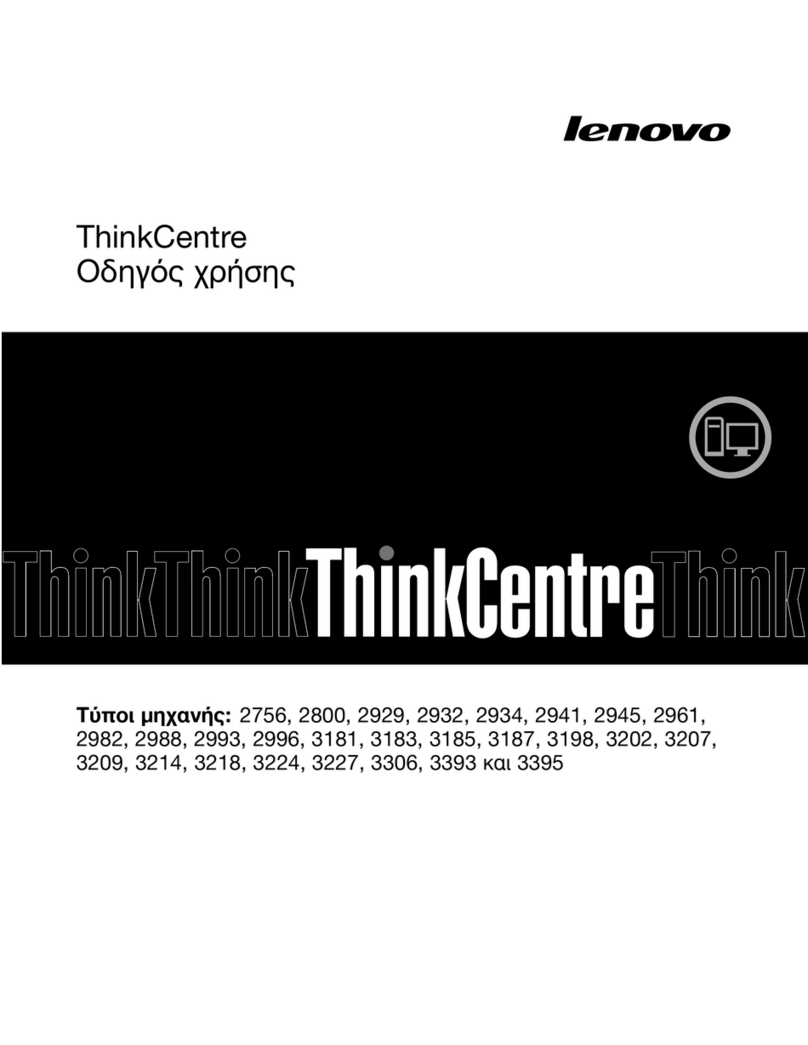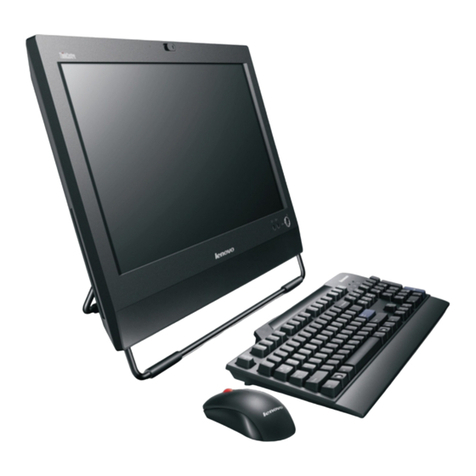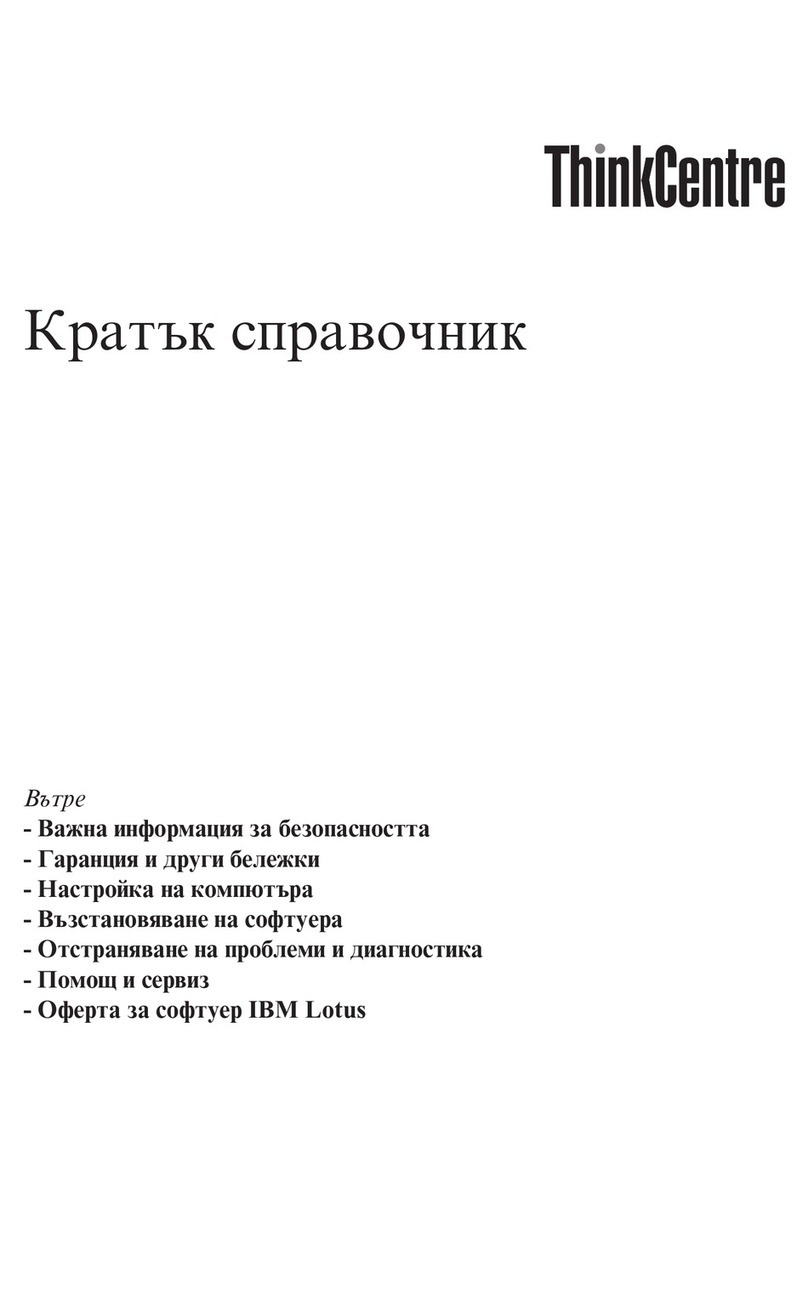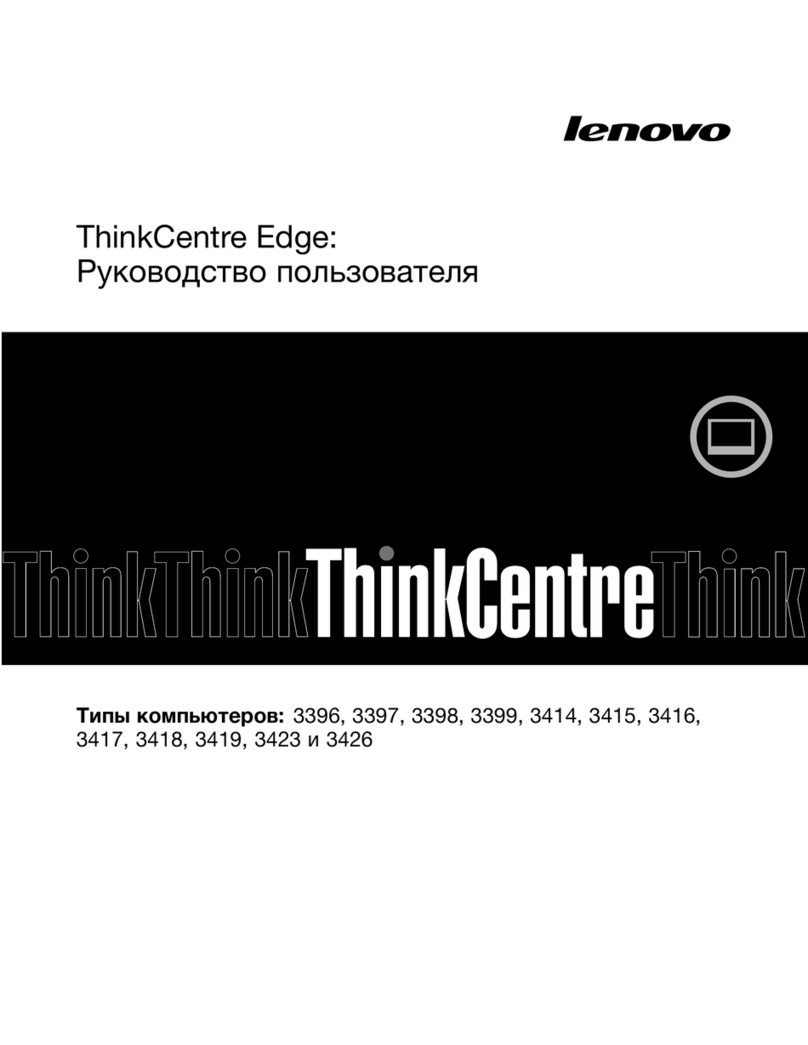
Acorn
Risc
PC Technical Reference Manual
Part 1 - System description
Introduction
The Acorn Risc PC family is built around the Advanced
Risc Machines (ARM) chipset, comprising the ARM
processor, the I/O and Memorycontroller (IOMD) and the
Video Controller (VIDC). All products feature 10MD and
VI
DC 20 and offer the following features:
DMA Enhanced Bus Interface (DEBI) -where
capabilities include 32-bit data transfer and the
support
of
up to two general purpose DMA channels
for transfer between I/O and memory
PC-AT compatible keyboard interface
Support for Video RAM (VRAM)
1-, 2-, 4-, 8-, 16- &32-bit pixel depths
Pixel rates in excess of 110 MHz
Support for up to 256
MB
of DRAM via two DRAM
SIMM sockets
Interchangeable ARM CPU card
OPEN Bus connector for second bus master
or
additional CPU.
Ablock diagram
of
the main system components
is
shown in Figure
1.1
overleaf.
General
Initially, model variants feature either
an
ARM 610
or
ARM700 processor with the option for aFloating Point
Accelerator
({PA)
to plug
in
alongside the ARM700.
the
processor is resident on a small plug
in
card which fits
in
to
one of the two 'OPEN Bus' slots on the main PCB.
Variants are also likely to appear which feature
an
Intel-
based processor resident
in
the second OPEN Bus slot.
The
number
of expansion bus slots available is either
none, 2
or
4(with architectural support for
up
to
8). The
backplane PCBs are easily interchangeable
as
they plug
into the 132-way edge connector
on
the main PCB. A
network slot is provided so that adding networkcapability
does not detract from the numberof free expansion card
slots available. This new Acorn propriety interface is,
therefore, incompatible with the existing
A30xO
and
A4000 network expansion cards.
Memory upgrading is provided for by the use of DRAM
Single In-line Memory Modules (SIMMs). Two sockets
are provided for this purpose and the machine uses
industry-standard modules chosen to meet the system
specifications. VRAM is provided on a plug-in daughter
card; this is an Acorn proprietary upgrade module and
plugs into the Dual In-line Memory Module (DIMM)
connector on the motherboard.
The Parallel, Serial, floppy disc and Integrated Drive
Electronics (IDE) hard disc sub-systems are handled by
an industry-standard PC clone Universal Peripheral
Controller device (Le. 'combo' IC). This provides PC-
standard control signals and allows each of these
interfaces to
be
(broadly) compatible with the
PC
world.
Anew version of RISC OS 3is provided with these
machines
in
two 1MB ROMS on the main PCB. This
version, 3.50, provides all the necessary software and
user interfaces
to
make use of the hardware: for instance
anew screen mode selector to cater for the increased
number of screen modes available with VIDC 20. Some
other functional improvements over version 3.11 have
also been included. The reader is referred to the
RISC as 3UserGuide for the Rise PC and RISC as3
Programmer's Reference Manual,
Vol.
5(version 3.5
supplement) for further details.
System chipset: ARM, IOMD,
vIDe
and
peripheral
controller
ARM
From the ARM 600 onwards, all ARM processors provide
afull 32-bit address bus and a32-bit program counter.
The
ARM
6xO
and
7xO
also have the ability to
be
configured in a26-bit address space mode for either
instruction fetches ordataoperations. RISC OS 3version
3.5 operates
in
26-bit address space for instruction
fetches
and
32-bit address space for data access. The
ARM610 (and 700) also feature 4KB and 8KB caches
respectively and both use write-back buffers to improve
on chip memory performance. Both devices also feature
an on-board memory management unit (MMU) with a
4KB page size.
IOMD
From
the
ARM600 onwards, the Memory Management
Unit is integrated within the ARM CPU. This has allowed
memory control and refresh (previously provided by
MEMC),
10
control (previously provided by 10C) and PC
specific I/O signals to drive the
PC
Combo device
(previously provided by lOEB) together with some new
functionality to
be
implemented in one device: the I/O
Memory Device, or 10MD. Essentially, 10MD provides
the following:
•direct interface to ARM61 0
or
ARM700
•
DRAM
control for2SIMMs providing 4banks of DRAM
•VRAM control and interface
to
VIDC20, including
generation of transfer cycles
•DMA Interface to CD-quality digital sound chip
•Video and sound DMA channels similar to that
provided by MEMC
•four general purpose 1/0 DMA channels
•..
16-bit byte-steered bus, for on-board peripherals such
as
the
network and IDE interfaces
two general purpose counter /timers and system
interrupt control registers
•interrupt line allocation similar to previous machines
•
PC
keyboard interface
•Quadrature mouse interface.
System
description
Issue 1, September 1994
1-1
